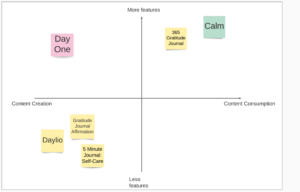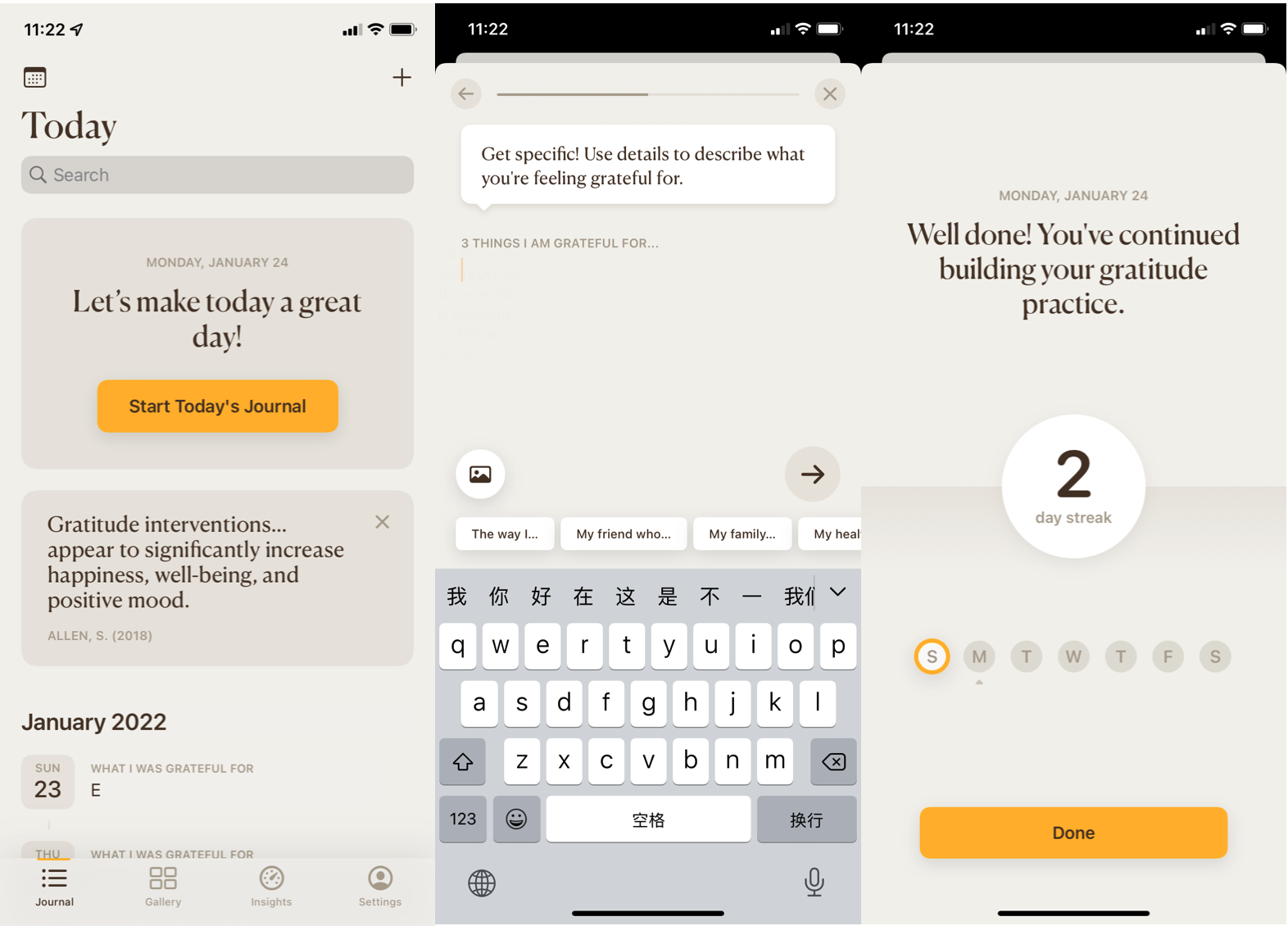Authors: Xiaohai Liu, Srijon Sheikh, Yuchen Wang
Introduction
As fans of positive psychology, our team wants to encourage writing gratitude journals, which increases an individual’s overall happiness, according to numerous research results. We conducted this qualitative comparative study to evaluate our potential competitors in the market, including general journaling apps, gratitude journaling apps, and mental health apps. To generate insights, we plotted a visualization of the competitors comparing the number of features and whether they encourage users to generate or consume content.
Deep-diving into the apps
Gratitude Journaling
Gratitude Journal Affirmation is a focused gratitude practicing app on multiple platforms, including Apple and Android, iPhone, iPad, and Apple Watch. It has four major components: Journal, Affirmation, Daily Zen, and Vision board. The app focuses on having users write down their gratitude with a low commitment and discover a purpose in their lives through vision boards.
- Audience: Adults who are new to or want to practice gratitude journaling
- Strength
- Simple and easy to navigate UI
- Cross-platform sync
- Low commitment (a few minutes a day) for users
- Weakness
- Limited functionalities
- Lack of social components
5 Minute Journal: Self-Care is a simple cross-platform app that prompts you to write down positive experiences under customizable guided questions. It has a clear UI and takes you as short as five minutes per day to complete gratitude journaling. It also displays user data analysis to help you gain interesting insights (like most frequent words) from your daily journal entries. This app has almost no weakness for users who are too busy to write long journals but want to be happy using proven principles of positive psychology.
- Audience: People who are too busy to write journals but want to be happier
- Strengths
- Requires a short amount of time and commitment (claimed 5 min per day)
- Freemium business model: can use basic features without a subscription.
- Promotion: Can share a “daily quote” as a figure with the app logo
- Weaknesses
- No desktop version
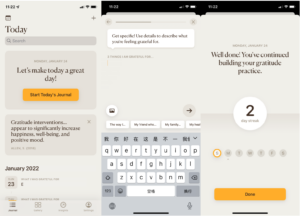
365 Gratitude Journal is a consumption-heavy platform that teaches life-changing lessons about positive psychology. Unlike other journaling apps, 365 Gratitude Journal focuses on the community features, such as exploring psychology courses and posting gratitude-related content on its discussion board. It also has a cute chatbot that makes the exploration more interactive and fun. However, the app has a confusing UI that mixes users’ gratitude journals with stories and lessons, which degrades user experience writing journals.
- Audience: People who are new to positive psychology or gratitude journaling
- Strengths
- Includes social media component
- Innovative “gratitude jar” that lets you trace back through time and pull out gratitude pieces
- An interactive chatbot that guides you through the app
- Weaknesses
- Confusing UI, Hard to separate journals from given stories
Multi-purpose / General Journaling
DayOne is a cross-platform and flexible application for a detail-oriented writer. With an impressive calendar view, daily streaks and reminders for entering new entries, and aggregating metadata (such as weather and fitness) through peripherals and tracking, DayOne offers many features. Its strength is a two-way sword: As a text-first interface, the mobile app feels like a computer app slapped into a smaller screen, which can feel cluttered to the user.
- Audience: Those who are detail-oriented towards their journals and want to write, add media and create complex journal entries from desktops and mobile devices.
- Strengths
- Robust features
- Syncing and cross-platform operability
- The “On This Day” feature shows you memorable journals on this date from past years.
- Weaknesses
- Mobile UI is cluttered and confusing.
- It looks like a desktop app slapped onto the Mobile app.

Daylio is a mobile-first mood, habit, and life tracking app with an aesthetic and welcoming UI. It strays from its journaling cousins by focusing on a click-based interface with daring emojis and bold design. The setup process is one of the best we have tested: users list their goals, customize their design palette, and choose a daily reminder. Other screens let users visualize their progress with streaks, monthly views, and habit/mood tracking features. However, mobile-friendliness means Daylio limits how much a user can type in the app – limiting brain dump or stream of consciousness reflections that many users in our Diary Study mentioned as their primary reasons for journaling.
- Audience
- Those who do not like to write much, who want a click-based interface, using communication conventions from instant messaging (like emojis)
- Strength
- Customizable visual design in the setup process
- Prompts users to clear goals when launching into the app
- Clear Visualization of progress
- Weakness
- It is entirely non-text-based, so it is not for those trying to reflect.
- Brain dumping a stream of consciousness is not possible.
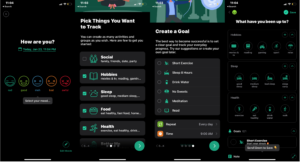
Meditation
Calm is a feature-packed awareness and meditation app on multiple platforms, including Apple and Android, iPhone, iPad, and Apple Watch. It has many mediation and awareness training features, including meditation guides, sleep guides, music, soundscapes (white noise), movement course, masterclass. Users can set goals of various kinds, gratitude, combat anxiety, and enjoy various training and guidance.
- Audience
- Young teens and adults who want to improve their mental health or sleep better by practicing mindfulness
- Parents who want their kids to practice mindfulness
- Strength
- A wide variety of content functionalities offered
- Pastel color UI looks calming,
- Cooperation with celebrities to create content and attract users
- Weakness
- Too many functionalities are intimidating
- A lot of content consumption and limited reflection
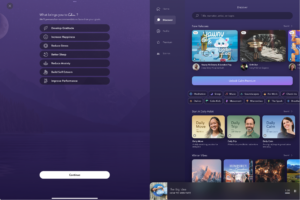
Comparative Map
We mapped these applications based on two metrics: the number of features and content creation vs. consumption (the level that user creates or consumes content). We found that half of the analyzed apps have simple functions and focus on content creation. In contrast, two other apps offer many features while encouraging users to read or listen. Our team would like to follow the former style in the initial design phase. However, since general journaling or mental health apps can easily add a new feature to become our direct competitors, we need to determine if it is viable to make our app intriguing in the scope of gratitude journaling while maintaining simplicity.
